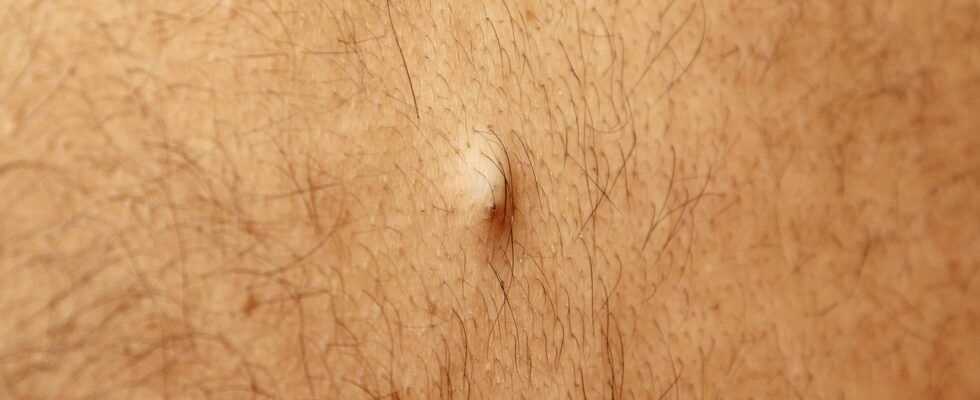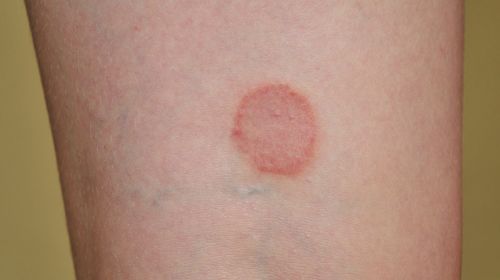An atheroma is a benign cyst of the skin. As long as an atheroma does not become inflamed, it is only a cosmetic problem. If you want to get rid of an atheroma, only surgical removal will help.
- Atheromas are most common on the head and neck.
- © iStock.com/anayas
Article content at a glance:
What is an atheroma?
Atheroma is a cyst of the skin. In medicine, cysts are hollow spaces in the body that are surrounded by a closed capsule and filled with thin or thick contents. Atheromas are colloquially referred to as groats or semolina cysts.
Where do atheromas arise?
Atheromas arise in the area of the hair follicles. The hair follicle (also known as the hair follicle) is the structure that surrounds the human hair follicle. Hair follicles are found all over the body – even where the hair is only very small and fine.
Atheromas can also appear anywhere on the body. However, they are most common in the head and neck area. Often several atheromas are found close together.
Are Atheromas Dangerous?
Atheromas are benign and do not transform into malignant tumors even with prolonged existence. They can become very large and in pronounced cases can reach the size of a tennis ball.
Sebum and epidermal cysts
Depending on which area of the hair follicle the cystic change originates from, doctors distinguish between two types of groats bags:
Real atheromas are also known as sebum cysts or trichilemmal cysts. They arise in the so-called trichilemm, a deeper area of the hair follicle.
Epidermal cysts grow very superficially. They arise directly on the funnel-shaped extension of the hair follicle (hair funnel or infundibulum) located above. This is where the hair emerges from the skin.
Most medical professionals use the term atheroma to refer to the less common epidermal cysts.
A reliable differentiation between the two types of cysts can only be made under the microscope, if an atheroma is removed and the cyst wall and contents are examined in detail.
The following differences give an indication of the origin of the atheroma:
The much more common sebum cysts are 90 percent in the head and neck area. Often several cysts coexist at the same time. Epidermal cysts, on the other hand, occur on the face, chest, back, upper arms and thighs, and in the genital area.
In the case of the epidermal cyst, the filling consists of peeled horn material arranged like an onion skin. The sebum cyst is filled with horn material and sebum.
With sebum cysts, there is rarely a connection to the outside world. An epidermal cyst is more often seen as a small duct through which the cyst contents can escape to the surface of the skin.
There is a hereditary component, especially for sebum cysts: they often occur more frequently within a family.
How does an atheroma develop?
Atheroma forms when ducts in the area of the hair follicle become blocked.
Development of a sebum cyst
In the sebum cyst, the duct of a sebum gland is blocked. Sebum glands are located next to the hair follicle and release sebum to the hair follicle via an outlet duct. This sebum normally gets to the outside, protects the hair and keeps it supple.
The duct can be blocked by small skin cells, for example. The sebum production continues and the sebum accumulates more and more. The hair follicle is expanded like a balloon. The wall of the hair follicle changes into the cyst wall and encloses the sebum cyst that has formed.
Formation of an epidermal cyst
In the case of the epidermal cyst, the outermost opening of the hair follicle is closed to the outside. This can happen through a flake of skin that isn't shedding properly. The occlusion can also be the result of skin inflammation or injury.
Since skin cells (epidermal cells) and cells forming the cornea (keratinocytes) in the deeper layers constantly multiply in the upper layer of the skin, these can no longer be released to the outside and accumulate. An epidermal cyst develops.
What symptoms can atheroma cause?
Typical appearance
The typical image of an atheroma is a bulging, elastic bump. The size can range from a few millimeters to several centimeters. This hemispherical elevation continues to grow until the groats bag has reached its individual size. After that there is no more growth.
As long as there are no inflammatory reactions, the color of the skin in the area of the atheroma is unchanged. With very large atheromas, the skin may be hairless or covered with widely spaced hair.
If a discolored point can be seen in the center of the atheroma, in the area of which there is a secretion of the cyst contents, it is probably an epidermal cyst.
Typically, groats are firmly attached to the skin, but can be easily moved on the surface. However, this can change after inflammation processes – the atheroma is then completely immovable.
Does atheroma hurt?
As long as an atheroma is not inflamed, it does not hurt. Infected atheromas, however, are very sensitive to touch and pressure.
Diagnosis of atheroma
The doctor can make the diagnosis simply by asking specific questions and looking at and touching the elevation of the skin. The doctor cannot say for sure whether the atheroma is a sebum cyst or an epidermal cyst.
If an atheroma has been removed, a tissue examination is done. This is important to ensure that it is really a benign atheroma and not a malignant cystic growth. With the help of the tissue examination, specialists can also differentiate between sebum cyst and epidermal cyst.
Remove atheroma or treat with ointment
Many sufferers try in vain to use home remedies on a bag of groats. However, there is no reliable treatment for atheroma without surgery: the only safe therapy is surgical removal of the entire cyst. It is not enough just to rid the cyst of its contents – if all or part of the cyst wall remains in the body, the atheroma will most certainly form again.
Surgical removal: procedure and who pays the costs?
The doctor can usually remove the atheroma in a practice using local anesthesia, so those affected usually do not have to go to the hospital.
Depending on how big the wound is, on which part of the body the groats bag was removed and what work the patient is doing, the operation is followed by a sick note for several days. In some cases, the person can go back to work the day after the operation.
The costs for surgery and follow-up treatment are covered by the health insurance company if this is medically necessary.
When is an atheroma removed?
If atheroma has been diagnosed, the person concerned should consider with the doctor whether it is necessary to remove it surgically. This is usually only the case if the bag of groats is very large or inflamed and painful. If none of this applies, a “full-blown” atheroma can remain in place: It neither causes damage nor is it disease-related.
Some sufferers still want an operation if the groats bag is in a place where it is cosmetically disturbing or hinders them in practical tasks (such as combing).
The fear that the cyst could be a malignant growth is also the reason for some people to decide to have an operation. They then often have a harmless atheroma removed.
Antibiotics and pull ointment
If an atheroma is inflamed, the doctor sometimes prescribes an antibiotic.
With an inflamed atheroma, a purulent focus can form. In addition to an antibiotic, some doctors therefore prescribe an atheroma ointment. This is a so-called pulling ointment that helps to ripen a pus that has developed. In this way, it distinguishes itself well from its surroundings and the bag of groats is easier to open. You can open the pus cavity with a small incision in the skin, remove the pus and then rinse the cyst with an antiseptic solution.
When the inflammation subsides, the entire atheroma can be removed to prevent a new cyst from forming.
Important: do not express atheromas!
Under no circumstances should those affected express an atheroma. The stimulus for this is particularly great in the case of epidermal cysts with a visible duct and secretion of cyst contents. But even if you manage to squeeze out the cyst material, the cyst wall will remain in the body and the atheroma will grow again.
In addition, there is a great risk that manipulation of the groats bag will cause bacteria to get into the cyst and cause serious infections: an abscess can develop in which the cyst is filled with pus. An operation is then inevitable. Inflammation in the surrounding tissue caused by the squeezing can also develop into sepsis (blood poisoning).
Course of disease and prognosis in atheroma
An atheroma grows slowly to its final size, often over many years.
Can an atheroma go away on its own?
There is a very low probability that an atheroma will resolve on its own: In rare cases, the body can completely absorb the inflamed tissue after an infection and thus get rid of the atheroma itself. In much more common cases, however, inflammation leads to the formation of pus and severe pain within a few days, so that surgery is necessary.
Frequent occurrence
Atheromas often appear in groups consisting of bags of groats of different sizes in different stages of growth. There is also a certain genetic susceptibility to the appearance of bags of groats. Some people therefore have to be prepared for the fact that atheromas keep forming in them.
After removal
After an atheroma has been completely removed, the risk of another bag of grits appearing in the same place is very low. However, if only the cyst contents were removed surgically or by pressing out, the success is usually short-lived. In addition to the risk of serious infection, there is a high probability that the remaining cyst wall will produce a new atheroma.


